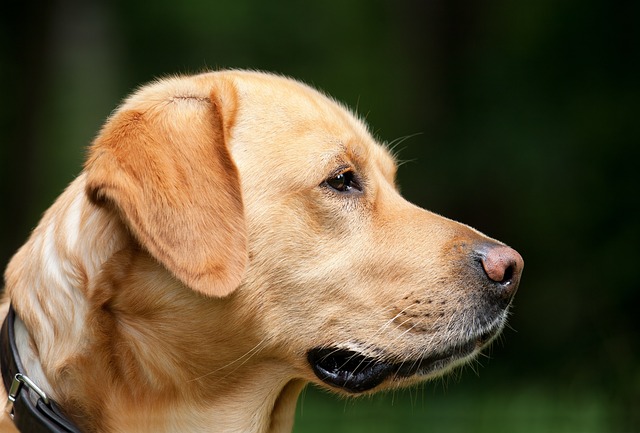
How can I tell if my dog's heatstroke is serious
Let’s be real: It’s a sticky August morning in Los Angeles, and you took your 2-year-old Golden Retriever, Max, for a walk a little later than usual
Let’s start with the honest truth: grabbing kitchen scissors to trim your dog’s overgrown fringe might seem like a quick fix, but it’s a high-stakes haircut. While professional groomers are always the gold standard—especially for complex breeds like Poodles or intricate styles—some minor at-home scissor work can be done safely if you prioritize caution, the right tools, and knowing your limits.
This isn’t about giving Fido a full salon makeover; it’s about targeted, stress-free tidying that keeps your dog comfortable and avoids a trip to the emergency vet. Across the US, UK, and EU, animal welfare laws like the UK’s Animal Welfare Act explicitly require protecting pets from pain, injury, and suffering—meaning a botched scissor job isn’t just messy; it could raise welfare concerns.
First, ask yourself: Is this necessary, and can I do it safely? Trimming a few stray hairs around the eyes for better vision? Maybe. Tackling severe matting near the skin or attempting a full-body cut? Absolutely not—seek a professional. Dogs have incredibly flexible skin that can easily tent up into scissors, and a sudden twitch can turn a trim into a traumatic cut. Their ears, paws, and tail areas are especially vulnerable. If your dog is anxious, wiggly, or has a history of nipping, put the scissors down. Safety isn’t negotiable.
Assuming you’re proceeding for simple maintenance, invest in proper tools: sharp, blunt-tipped grooming scissors (never kitchen or craft scissors!) and thinning shears for blending. Dull scissors pull hair, causing discomfort. Ensure bright lighting, a non-slip surface, and a calm environment. Enlist a helper to gently hold and reassure your dog if needed.

Prep matters: thoroughly brush and comb the entire coat first to remove tangles. Mats must be carefully dematted before any cutting—scissors slicing through mats risk cutting folded skin underneath, leading to serious wounds. If mats are severe or close to the skin, take your dog to a groomer or vet; cutting them out yourself is ethically and legally risky under welfare statutes prohibiting preventable suffering.
When trimming, move deliberately and keep scissors parallel to the body, never pointing inward. Work in tiny sections, holding hair between your fingers as a buffer against the skin. For face and eye areas, use blunt-tipped scissors only, and hold your dog’s muzzle gently but firmly. Trim conservatively—away from the eye—in the direction of hair growth. A single misstep here can cause permanent injury. For paw pads, lift the foot gently and trim only hair protruding between the pads, avoiding the delicate webbing. Use thinning shears sparingly around feathers on legs or tail for a natural look, never cutting large chunks. Sanitary areas (belly/rear) require extreme care; use one hand to pull skin taut away from the scissors.
Stop immediately if your dog shows stress: panting, trembling, growling, or trying to flee. Reward calm behavior with treats and praise. Remember, many common "at-home cuts" like shaving double-coated breeds (Huskies, Retrievers) are actively harmful—destroying their insulation and sun protection. When in doubt, leave it out. A slightly messy muzzle trim is far better than an accidental injury requiring stitches. Your dog’s trust and physical safety matter more than aesthetics.
Ultimately, view home scissor work as a last resort for minor touch-ups, not a replacement for professional care. Regular brushing prevents most drastic trimming needs. If cost is a barrier, research low-cost grooming clinics or charities in your area—many exist across Western Europe and North America. Prioritizing your dog’s wellbeing over convenience aligns with the spirit of responsible ownership embedded in Western welfare laws. When you put those scissors away unharmed and your dog shakes off happily, that’s success. For anything beyond the basics? Trust the pros—they’ve got the skills (and clippers!) to keep your pup safe and stylish.

Let’s be real: It’s a sticky August morning in Los Angeles, and you took your 2-year-old Golden Retriever, Max, for a walk a little later than usual

You're enjoying a summer afternoon at the park when you notice your dog has stopped panting and appears disoriented - their gums are bright red

Let’s paint the picture: You’re in your Denver apartment, watching your 4-year-old Boston Terrier, Ruby, plop down mid-play session with her favorite toy

Many dog owners notice their pets nails seem shorter after regular walks,but how much does this daily activity actually help?The answer depends on where you walk—concrete sidewalks or asphalt streets gently file nails as a dog's paws hit the ground

Most dog owners notice their pup scooting across the carpet at some point, but few connect it to impacted anal glands. These small sacs near a dog’s rectum secrete a scent for marking territory

Most vets agree that regular dog teeth cleaning is key to avoiding painful dental issues later. For healthy adult dogs, a professional cleaning at the vet’s office every 12 to 18 months usually works well.